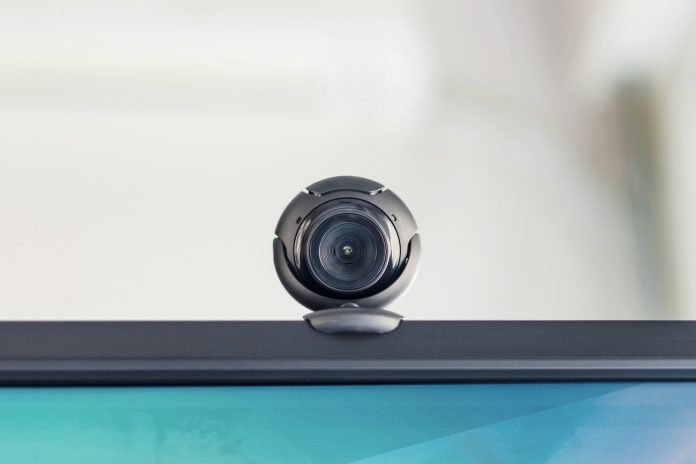At the point when Axis Communications delivered the main web convention (IP) camera after the 1996 Olympic games in Atlanta, there was some underlying disarray. Associated cameras weren’t something the market had been clamoring for, and numerous specialists addressed whether they were even important.
Today, obviously, customary simple cameras have been eliminated as associations have perceived the enormous benefit that IoT gadgets can offer, however, that innovation felt like a huge danger during those early days.
To express that things have changed from that point forward would be a sensational misrepresentation of the truth. The development of the Internet of Things (IoT) addresses one of the manners in which actual security has advanced. Associated gadgets have turned into the standard, opening up intriguing additional opportunities that go a long way past recorded video. Further turns of events, like the improvement and broad acknowledgment of the IP camera, have helped power extra leap forwards including improved examination, expanded preparing power, and the development of open-design innovation. On the 25th commemoration of the underlying dispatch of the IP camera, it merits thinking about how far the business has come — and where it is probably going to go from here.
Tech enhancements messenger the ascent of IP cameras
Contrasting the present IP cameras with those accessible in 1996 is practically ridiculous. While they were unquestionably momentous at that point, those early cameras could record only one casing like clockwork — a serious change from what cameras can do today.
Yet, notwithstanding this disadvantage, those on the forefront of actual security got what a great advancement the IP camera could address. All things considered, making an organization of cameras would empower more successful remote observing, which — if the innovation could scale — would empower them to convey a lot bigger frameworks, integrating divergent gatherings of cameras. Early applications may incorporate watching oil fields, air terminal runways, or far-off mobile phone towers. Even better, the innovation could introduce an altogether new universe of examination abilities.
Obviously, better chipsets were expected to make that unending possible a reality. Momentous or not, the restricted edge pace of the early cameras was never going to be adequately compelling to drive the broad reception of customary reconnaissance applications. Taking care of this issue required critical speculation of assets, yet in a little while, these improved chipsets brought IP cameras from one casing like clockwork to 30 edges each second. Helpless casing rate could at this point don’t be recorded as support for avoiding IP cameras for their simple cousins, and designers could start to investigate the gadgets’ examination potential.
Maybe the main innovative jump was the presentation of installed Linux, which made IP cameras more pragmatic according to a designer’s perspective. During the 1990s, most gadgets utilized exclusive working frameworks, which made them hard to produce.
Indeed, even inside the actual organizations, restrictive frameworks implied that engineers must be prepared for a particular innovation, costing organizations both time and cash. There were a couple of endeavors at normalization inside the business, for example, the Wind River working framework, yet these eventually fizzled. They were excessively little, with restricted assets behind them — what’s more, a superior arrangement previously existed: Linux.
Linux offered a wide scope of advantages, not the least of which was the capacity to work together with different engineers in the open-source local area. This was a street that ran two different ways. Since most IP cameras did not have the hard circle important to run Linux, equipment is known as JFFS was fostered that would permit a gadget to utilize a Flash memory chip as a hard plate. That innovation was added to the open-source local area and keeping in mind that it is at present on its third emphasis, it stays in far-reaching use today.
Pressure innovation addressed a comparative test, with the more noticeable information pressure models in the last part of the ’90s and mid-2000s ineffectively appropriate for video. At that point, video stockpiling included individual edges being put away individually — information stockpiling bad dreams. Luckily, the H.264 pressure design, which was planned considering video, turned out to be considerably more typical in 2009.
Before that year’s over, over 90% of IP cameras and most video-the-board frameworks utilized the H.264 pressure design. Note that enhancements in pressure abilities have additionally empowered producers to further develop their video goals too. Before the new pressure design, video goals had not changed since the ’60s with NTSC/PAL. Today, most cameras are equipped for recording in superior quality (HD).
1996: First IP camera is delivered.
2001: Edge-based investigation with video movement recognition show up.
2006: First downloadable, edge-based investigation become accessible.
2009: Full HD turns into the standard video goal; H.264 pressure goes standard.
2015: Smart pressure reforms video stockpiling.
The development of examination
The investigation isn’t actually a “new” innovation — clients mentioned different examination abilities even in the beginning of the IP camera — however, it has seen emotional improvement. Even though it may appear to be curious by the present exclusive requirements, video movement discovery was one of the most punctual investigations stacked onto IP cameras.
Clients required an approach to distinguish development inside specific boundaries to abstain from having a tree influencing in the breeze, or a squirrel running by, trigger a bogus alert. Further refinement of this kind of discovery and acknowledgment innovation has mechanized numerous parts of actual security, setting off alarms when possibly dubious action is recognized and guaranteeing that it is brought to human consideration. By removing human frailty from the situation, the examination has diverted video observation from a receptive instrument to a proactive one.
Solid movement identification stays one of the most broadly utilized examinations and keeping in mind that bogus alerts can never be completely disposed of, present-day upgrades have made it a dependable method to distinguish likely gatecrashers. Article location is additionally filling in notoriety and is progressively fit for grouping vehicles, individuals, creatures, and different items.
Tag acknowledgment is well known in numerous nations (however less so in the United States), not only for recognizing vehicles associated with crime, yet for utilizes as basic as leaving acknowledgment. Subtleties like vehicle model, shirt tone, or tag number are simple for the natural eye to miss or neglect to see — however on account of present-day examination, that information is classified and put away for simple reference. The approach of innovation like profound realizing, which elements better example acknowledgment and item grouping through improved naming and order, will drive further headways around here of examination.
The ascent of investigation additionally helps feature why the security business has accepted open-design innovation. Basically, it is unthinkable for a solitary maker to stay aware of each application that its clients may require. By utilizing open-engineering innovation, they can enable those clients to search out the arrangements that are appropriate for them, without the need to explicitly tailor the gadget for certain utilization cases. Emergency clinics may hope to add sound examination to distinguish indications of patient trouble; retail locations may zero in on individuals counting or burglary discovery; law authorization may zero in on gunfire recognition — with these applications housed inside a similar gadget model.
Note that the COVID-19 pandemic drove intriguing new uses for both actual security gadgets and examination — however a few applications, like utilizing warm cameras for fever estimation, demonstrated hard to execute with a serious level of precision. Inside the medical services industry, camera use expanded altogether — something far-fetched to change. Emergency clinics have seen the advantage of cameras inside persistent rooms, with video and radio innovation empowering medical services experts to screen and speak with patients while keeping a safe climate.
Indeed, even basic investigation like cross-line discovery can create a caution if a patient who is a fall hazard endeavors to leave an assigned region, possibly diminishing mishaps and generally obligation. The way that investigation like this bears just a passing notice today features how far actual security has come since the beginning of the IP camera.
Planning for security
All things considered, an assessment of the present patterns can give a brief look into what the future may hold for the security business. For example, video goals will unquestionably keep on improving.
Ten years prior, the standard goal for video reconnaissance was 720p (1 megapixel), and 10 years before that it was the simple NTSC/PAL goal of 572×488 or 0.3 megapixels. Today, the standard goal is 1080p (2 megapixels), and solid utilization of Moore’s law demonstrates that a long time from now it will be 4K (8 megapixels).
As could be, the measure of capacity that higher-goal video produces is the restricting element, and the advancement of savvy stockpiling advances, for example, Zipstream has helped enormously lately. We will probably see further upgrades in keen stockpiling and video pressure that will assist with making higher-goal video conceivable.
Network protection will likewise be a developing worry for the two producers and end clients.
As of late, probably Sweden’s biggest retailer was closed down for seven days in light of a hack, and others will meet a similar destiny if they keep on utilizing ineffectively got gadgets. Any piece of programming can contain a bug, yet just engineers and makers focused on distinguishing and fixing these potential weaknesses can be viewed as dependable accomplices. Governments across the globe will probably pass new guidelines ordering network safety upgrades, with California’s new IoT security law filling in as an early marker of what the business can anticipate.
At long last, moral conduct will keep on turning out to be more significant. A developing number of organizations have started foregrounding their morals strategies, giving rules for how they expect innovation like facial acknowledgment to be utilized — not manhandled.
While new guidelines are coming, recall that guideline consistently lingers behind, and organizations that wish to have a positive standing should cling to their own moral rules. An ever-increasing number of buyers presently list moral contemplations among their significant concerns—particularly in the wake of the COVID-19 pandemic—and the present organizations should emphatically think about how to communicate and authorize capable item use.
Change is consistently around the bend
Actual security has made considerable progress since the IP camera was presented, yet recall that these changes, while critical, occurred over twenty years. Changes set aside time — frequently additional time than you may might suspect. In any case, it is difficult to contrast where the business stands today with where it stood 25 years prior without being intrigued. The innovation has advanced, end clients’ necessities have moved, and surprisingly the central parts in the business have gone back and forth as per their capacity to stay aware of the occasions.
Change is the inescapable, however cautious perception of the present patterns and how they fit into the present advancing security needs can help the present engineers and gadget makers see how to situate themselves for what’s to come. The pandemic featured the way that the present security gadgets can offer an added benefit in manners that nobody would have anticipated only a couple of brief years prior, further highlighting the significance of open correspondence, solid client service, and moral conduct.
As we move into the future, associations that keep on focusing on these guiding principle will be among the best.


































